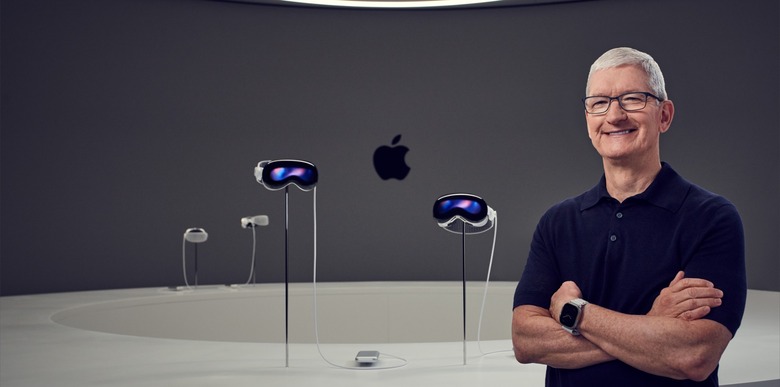Cheaper Apple Vision Pro Will Still Cost A Ton Of Money
While we still have to wait for Apple to start selling its Vision Pro headset, rumors about a second-generation less expensive model are already out there. In his latest Power On newsletter, Bloomberg's Mark Gurman discusses the price point of this cheaper model, in addition to the compromises Apple would be making in order to release a more affordable version of its spatial computer.
At the moment, we only know the Apple Vision Pro will start at $3,499. But we're not sure how much it will actually cost, as there might be different storage options and some pricey accessories needed to make this headset more useful.
With that in mind, Gurman says that Apple has internally discussed prices ranging from $1,500 to $2,500 for the upcoming "low-cost" Apple Vision Pro model. Besides lower-resolution displays and an iPhone processor rather than a Mac chip, Apple could be planning to remove the EyeSight feature and include fewer external cameras and sensors.
At this point, since shipping the Apple Vision Pro will be so challenging, it almost feels unthinkable that a low-cost model could arrive that soon. In September, analyst Ming-Chi Kuo said Apple had canceled its low-cost headset project, which was expected to land in 2025.
If Apple still plans to release this device with all those compromises, it seems the early life of Vision Pro will be very problematic. First of all, it doesn't look like this device will sell outside the US in 2024. As the company will do a slow rollout of the Vision Pro in 2025, a low-cost model could make customers indecisive about which headset to buy. Lastly, a proper second generation is only expected by 2027, at least three years after the original product. That's a long time between models.
Gurman says a second generation will have everything the first generation will feature but in a smaller and lighter package. In addition, Apple also plans to integrate prescription lenses directly into the device by simplifying the design.
With so many challenges ahead, I'm curious to see how Apple will handle this product's strategy, as it looks too expensive, and a lower-cost model also doesn't look like it will solve or entice more users into spatial computing.
